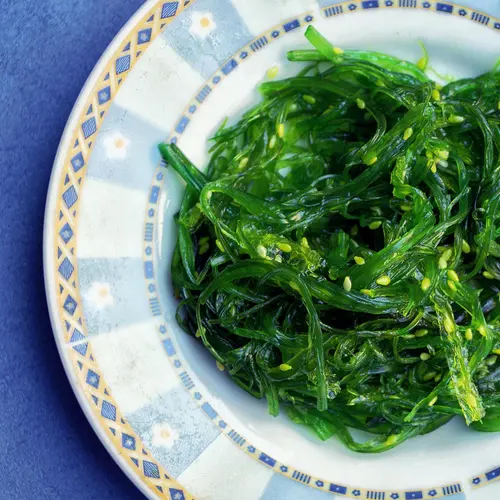At first glance, basmati rice likely doesn’t look all that different from other types of rice. One sniff of the grain, however, and you’ll notice a major difference. Basmati rice has a very distinct smell that many describe as being similar to popcorn when it’s cooked. In fact, the word “basmati” in Hindi means “full of aroma” or “fragrant.” In some places, it’s called the “queen of perfumed rice.”
Basmati rice is native to India and Pakistan, with India being responsible for 2/3 of the global supply. While its true origins aren’t clear, archaeologists have discovered a type of long-grain rice near Udaipur, India dating back to between 2000 and 1600 BC that they believe to be an ancestor of the basmati rice we enjoy today.
Basmati rice has been cultivated for thousands of years in the foothills of the Himalayas. Today, it’s a staple in many Indian dishes and is enjoyed all around the world.
Basmati rice comes in two varieties, white and brown. Both have a nutty taste and a distinct smell. White basmati, however, is more processed. The hull, bran, and germ are all removed. With brown basmati, only the hull gets removed. Both types make for a delicious and healthy addition to your diet.
Health Benefits
Both brown and white basmati rice provide many health benefits, including:
Most types of rice, particularly white rice, have a high glycemic index, basmati rice is much lower on the scale. With a glycemic index between 50 and 58, basmati rice is a low to medium glycemic index food. If you have diabetes, small portions of basmati rice can be a part of your healthy diet.
In addition to a lower glycemic index, basmati rice can also contain a significant amount of fiber – just be sure to check the nutrition label. A higher intake of dietary fiber can help to reduce the risk of developing Type 2 diabetes.
Low fiber intake can lead to digestive issues such as constipation. The fiber in basmati rice is soluble, meaning it adds bulk and helps move waste along the digestive tract.
Better Heart Health
Eating whole grains like brown basmati rice is linked to a lower risk of heart disease. Whole grains help to reduce blood cholesterol levels. They also help to reduce the risk of high blood pressure, a risk factor for heart disease.
Reduced Risk of Cancer
Brown basmati rice has more fiber than the white version, and about 20% more than other types of brown rice. Higher fiber diets can help to reduce your risk of developing certain types of cancers, particularly colorectal cancer. Eating 3 ounces of whole grains per day may lower your risk for this type of cancer by about 17%.
Better Brain Health
Basmati rice is high in B vitamins, including B1 (thiamine). It has 22% of your daily recommended intake in each serving. Thiamine is crucial for brain health, and a deficiency can lead to a condition called Wernicke encephalopathy.
Nutrients Per Serving
1 cup of cooked white basmati rice contains:
- Calories: 210
- Protein: 4 grams
- Fat: 0.5 grams
- Carbohydrates: 46 grams
- Fiber: 0.7 grams
- Sugar: 0 grams
Basmati rice also contains many other important nutrients, including:
- Vitamin B1 (thiamine)
- Vitamin B6
- Copper
- Folate
- Iron
- Magnesium
- Phosphorous
- Zinc
The nutrients in white basmati rice are similar to those found in other types of white rice. Brown basmati rice is also comparable to other types of brown rice.
While both white and brown versions of basmati rice provide vital nutrients, brown basmati rice contains more fiber, phosphorus, zinc, and B vitamins. Brown basmati rice is also lower on the glycemic index. White basmati rice, however, is easier to digest.
How to Prepare Basmati Rice
You can find dry basmati rice at many grocery stores. To cook it, you first need to rinse it well. Place the desired amount of dry rice in a container and fill with a couple of inches of water. Swish it around to release the starches and dump the water out. Repeat this process until the water runs mostly clear, then drain the rice using a fine-mesh strainer.
Add your rice to a pot and fill it with water. For every cup of rice, add 1.5 to 1.75 cups of water. Bring the mixture to a boil. Next, cover the pot and turn the heat down to low. Let the rice simmer for 15 to 20 minutes to absorb the water. Once the rice becomes soft, remove the pot from the heat and let sit for another 5 minutes. Fluff the rice using a fork and serve.
Basmati rice, both brown and white, is a nutritious side that pairs well with curries, soups, and a variety of other dishes.
Looking to cook your own basmati dish? Give these ideas a try:
- Stir-fry with vegetables and a protein (such as chicken or tofu)
- Pair with coconut milk, turmeric, and fresh ginger
- Mix with black beans for a complete protein
